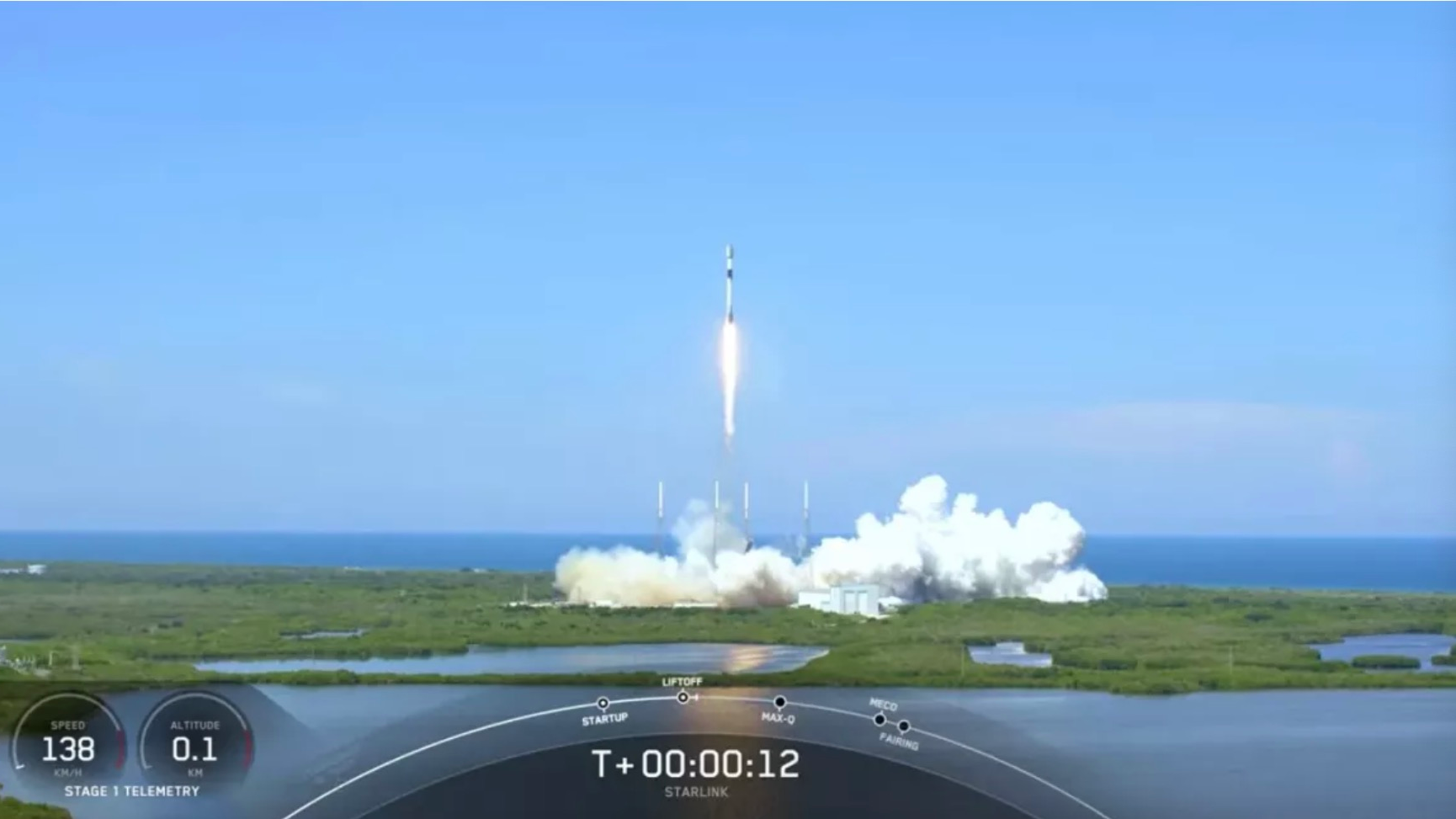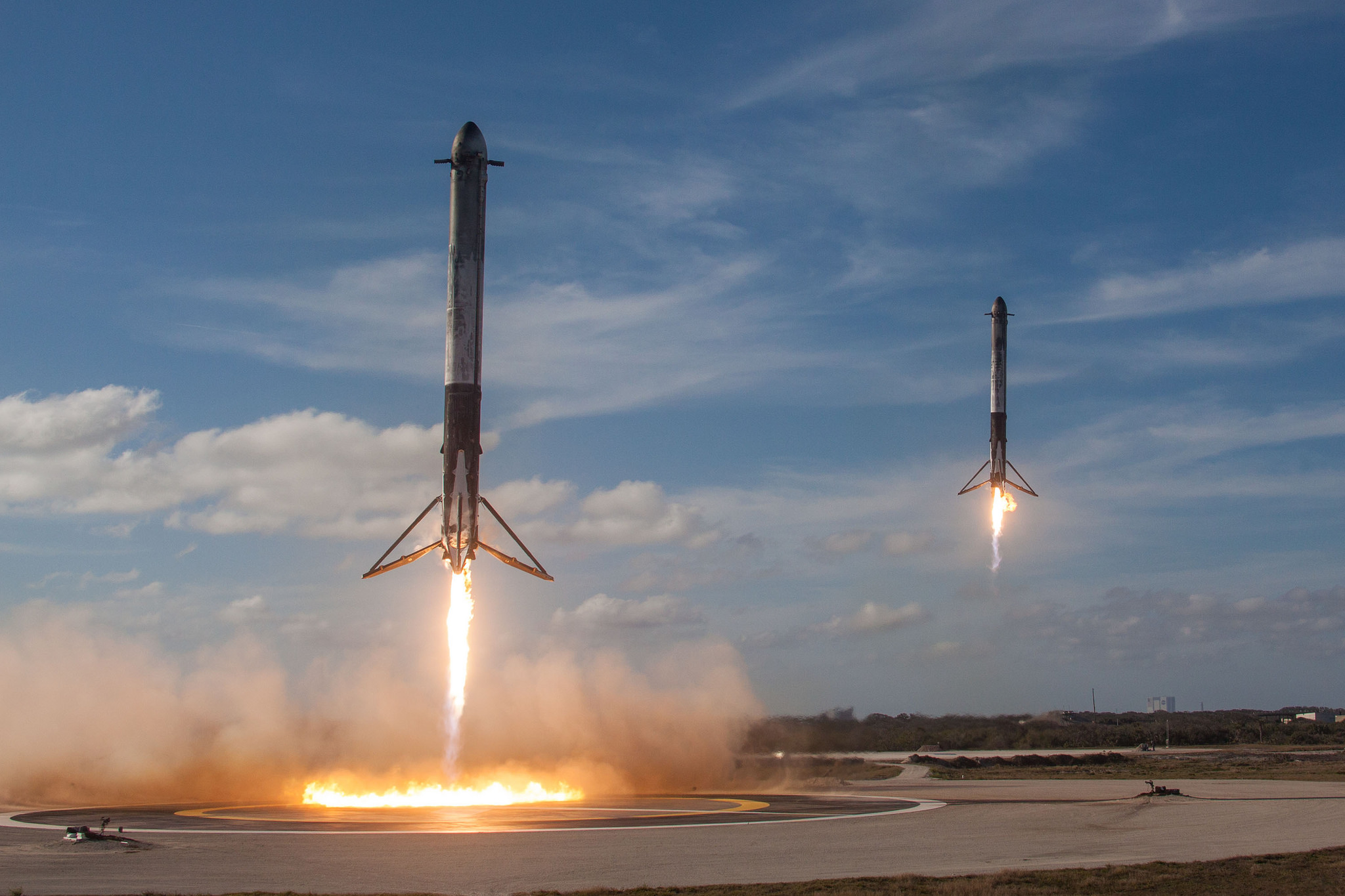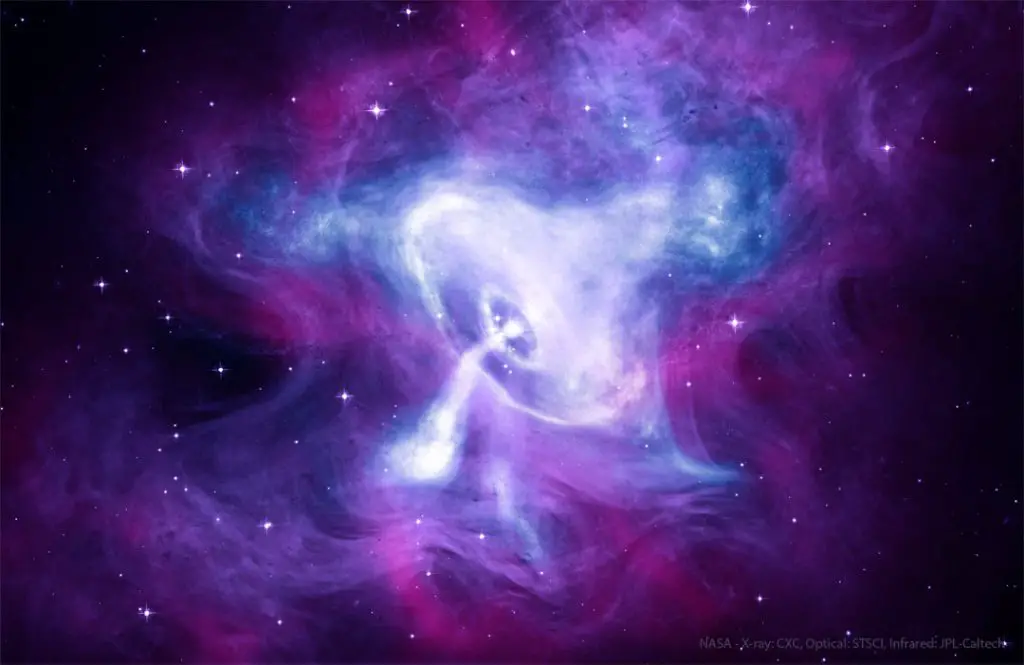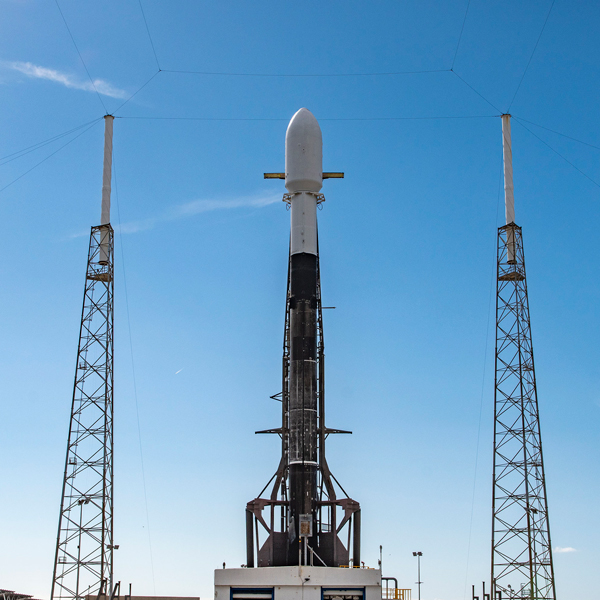

In December 2019, NASA Administrator Jim Bridenstine said it could cost $900 million per launch-if it ever launches. One reason for the endless delays afflicting the James Webb Space Telescope, the successor to the Hubble Space Telescope, has been the need to fold up its segmented 6.5-meter mirror to fit aboard a European Ariane 5 rocket, says CfA astrophysicist Martin Elvis.Ī viable Starship could also create political pressure to scupper the Space Launch System (SLS), the NASA-developed heavy-lift rocket that is supposed to power the agency back to the Moon and on to Mars. The rocket's 9-meter-diameter cargo hold could easily accommodate giant celestial observatories, such as the proposed Habitable Exoplanet Observatory, which would directly image distant planets. Todd suggests $10 million per flight might be more realistic.
#SPACEX FALCON 9 ROCKET LAUNCH FULL#
Last year, Musk said full reusability and thrifty use of propellant would drop the cost of each Starship launch to $2 million. (Three have been accidentally destroyed in testing.) The steel alloy spacecraft and its superheavy booster stand 120 meters tall, towering over the Saturn V that carried people to the Moon. SpaceX has not announced a date for an inaugural flight, but has built six prototypes at a pace of nearly one per month. In 2022, it is set to launch the Psyche mission to a metallic asteroid, in the first NASA launch of a Falcon Heavy, which sits between the Falcon 9 and Starship in its propulsive power.īut it's the company's upcoming Starship that has designers of science missions salivating. SpaceX has boosted NASA science in other ways, delivering the climate-observing Jason-3 satellite and the planet-seeking Transiting Exoplanet Survey Satellite to orbit.

"More people equals more research," she says. Cheaper, more frequent flights could improve the biomedical and physical science experiments aboard the station, says industry analyst Laura Forczyk, owner of the space consulting firm Astralytical.

The upcoming crewed flight could displace the Russian rockets NASA has hired-at a hefty price-to carry humans to the ISS since 2011. LIU/ SCIENCE (DATA) JONATHAN MCDOWELL/CFA It turns out that having a goal can be economically successful." Going up Since the retirement of the space shuttle in 2011, SpaceX rockets have picked up an increasing share of NASA's launches. "A lot of other space companies are trying to win contracts," says Jonathan McDowell, an astrophysicist at the Harvard-Smithsonian Center for Astrophysics (CfA). SpaceX pivoted to a larger Falcon 9 rocket in 2010, and began to deliver cargo to the ISS for NASA 2 years later. "SpaceX works on the basis of ‘test it until it breaks.'"īetween 20, the first three flights of its Falcon 1 rocket ended in failure. "NASA tries to model everything to the nth degree," says David Todd, an analyst at Seradata, which tracks launches and satellites. Some worry the company, led by brazen billionaire Elon Musk, could jeopardize NASA's long-standing culture of safety. Yet SpaceX, with a fast-and-loose Silicon Valley mindset, has overlooked the potential for its technologies to contaminate night skies and pristine planets. With its outsize capacity, Starship could cheaply put large telescopes in orbit and heavy science experiments on moons and planets.

It has lowered the cost of spaceflight through innovations such as reusable stages and fairings, saving NASA money. Researchers see both benefits and risks in the company's increasing power. SpaceX's goals are not limited to low-Earth orbit: Last month it was selected to design a Moon lander, and it is steadily testing a huge heavy-lift rocket, called Starship, that could carry people to Mars. SpaceX now handles about two-thirds of NASA's launches, including many research payloads, with flights as cheap as $62 million, roughly two-thirds the price of a rocket from United Launch Alliance, a competitor. The occasion marks yet another milestone for the private California company, which over the past decade has gone from underdog to dominator. This time, astronauts will be riding to the International Space Station (ISS) not on a NASA rocket, but aboard vehicles bought from the private space company SpaceX: the Dragon 2 capsule atop a Falcon 9 rocket. soil for the first time since 2011, when the space shuttle Atlantis roared aloft on its final voyage. On 27 May, NASA will launch people into space from U.S.


 0 kommentar(er)
0 kommentar(er)
